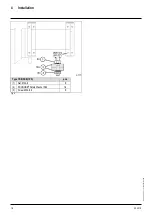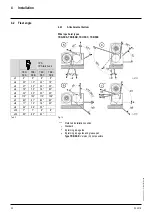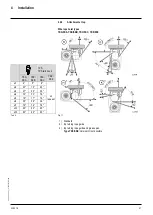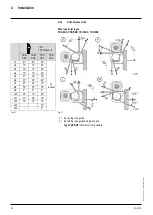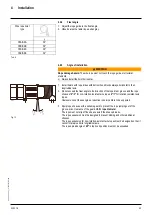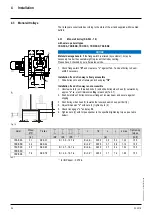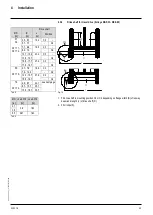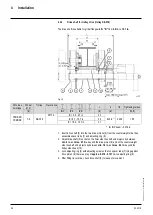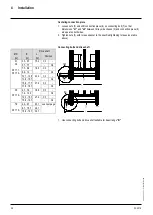
2
General safety notes
03.2018
13
ba
-o
.2
.6
.0
-us
-1.
1-
y
|
A
11
86
75
01
R
ev
A
A
2.10
Safety-conscious operation
YK/SK wire rope hoists are constructed according to the state of the art and equipped
with an overload safety device in standard version. In spite of this, dangers may arise
from inappropriate use or use for an unintended purpose.
1.
The owner is responsible for ensuring that work is carried out with safety in mind and
avoiding risks.
2.
Read the instructions before starting to work with the product.
3.
Standing under a suspended load is forbidden. Danger to life and limb!
4.
Observe the “Duties of crane operator”
.
5.
Before starting work, find out where the emergency stop button is (usually in the
control pendant).
6.
Do not put your hand between edges which might crush or cut.
7.
Do not grasp the moving rope.
8.
Take note of the relevant instructions when attaching loads.
9.
Do not stand between load and wall.
10.
Start lifting the load carefully.
11.
Never attempt to remedy a malfunction while the load is suspended.
12.
Never use bent, open or distorted load hooks, or attempt to straighten them.
13.
Have a damaged hook safety latch repaired.
14.
Never anneal the hook.
15.
Never lock the buttons of the control switch in place.
16.
Never allow the load to drop into the hoist’s load
-bearing equipment.
17.
Before lifting loads, ensure that the stated maximum working load is not exceeded.
18.
When lifting and setting down loads, ensure that they are in a stable position in order
to avoid accidents due to the load toppling or overturning.
19.
Secure the load if the power is cut.
20.
Do not kink or crush control cables.
21.
Choose a safe place from which to operate the hoist.
22.
Joining or mending ropes, chains or belts is not permitted.
23.
Never touch metal components that are colder than 32°F or hotter than 131°F without
wearing protective gloves.
24.
Do not use the emergency limit switch (ultimate limit switch for highest and lowest
hook position) as an operational limit switch.
25.
Report damage and defects to the product (abnormal noises, impaired braking
function, deformations, etc.) to the person responsible immediately. Do not use the
product until the faults have been eliminated.
26.
Do not remove information plates from the product. Replace illegible or damaged
plates.
27.
Have hoist inspected by the relevant authority before commissioning.
2.11
Attaching load
1.
Use only tested and approved slings for attaching the load.
2.
The hoist rope must not be wound around the load.
3.
The load must always be suspended from the base of the hook. The tip of the hook
must not be subjected to load.
4.
Removing the safety latch from suspension and load hooks is not permitted.
5.
Only attach hook block when stopped.
6.
Hook or hook block turns under load
–
release the hook block and rope when lifting
the load.
7.
Do not reach into the hook block opening at the rope inlet
–
crushing hazard!
8.
Guide the hook block on the load hook bracket - not on the hook base!
–
crushing
hazard!


















